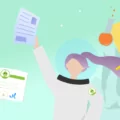Resume structure has a major impact on how hiring managers read your resume. How can you choose the right resume structure and build a more effective resume?

How to Structure Your Resume for Best Results
Resume Structure
In the path of writing a resume, one of the most important elements is your resume structure, or format. This is what shows recruiters that you’re professional and that you have the skill set necessary to get the job you’re looking for. However, it can be difficult to come up with the best resume format for your job search. If you’re looking for the best way to structure your resume, then here’s what you need to know.

Does Resume Structure Actually Matter?
Yes. Resume structure gives you an outline for your resume that emphasizes your best qualifications. It makes it easier for a recruiter to scan your resume and understand the strengths you’re trying to showcase.
The Three Resume Formats
There are three commonly used resume formats that you’ll see, depending on the type of resume you want to write.
The most common resume type is the chronological resume format. This resume format focuses on your work history. It gets its name from the fact that your employment history is listed in reverse-chronological order, with the most recent experience first. Each job you list will include descriptions of your most important responsibilities and accomplishments.
If you don’t have a lot of work experience, then the functional resume format may be a better option for you. This option focuses on certifications and specific skills, including both hard skills and soft skills. This type of format is great for first-time job seekers, career changers and anyone applying for jobs that are more dependent on skills than experience.
The final option is the combination resume format, also called the hybrid resume format. This format emphasizes both your skills and your work history. This format can help showcase relevant skills and experiences if you’re changing careers, or if you want to present a balanced mix of skills and work experiences.
Resume Formatting Tips to Build Your Resume Structure
Just finding the right resume format isn’t enough to have a great resume. Here are a few formatting tips that can help you impress a potential employer:
- Use a professional resume font. Arial, Helvetica, and Times New Roman are all great options.
- Focus on having some white space in your document as much as you focus on filling up empty space. With too little white space, your resume will look crowded.
- Write your resume tailored specifically toward the job you want. It’s important that you create a resume that addresses the specific needs of the job posting.
- Don’t skimp on your cover letter. You can use the ResumeNerd cover letter builder if you’re not confident in your personal cover letter writing skills.
To avoid resume formatting problems and hone your content for the job you want, use the ResumeNerd resume builder. If you find a place to put yourself above other job seekers, then you should always take it, and the ResumeNerd resume builder is a great example of that.
FAQ: Resume Structure
There are typically five sections you should include in your resume. At the top of your resume, you’ll write the resume header. This includes your full name, contact information like your phone number and email address, and professional links, such as your LinkedIn profile. Below that you’ll write your resume summary. This is a two to three-sentence paragraph that sums up your top achievements and skills. Then, you’ll write a skills section which features your best abilities and qualifications in bullet points.You’ll then write a work experience section, which provides brief descriptions of your previous relevant professional experiences. After that, you’ll have an education section, where you’ll list your top education credentials as well as any related certifications and training. These five sections are the most important components of any resume, although you have the option of adding other sections, such as “Awards” or “Publications”.
There’s no such thing as one single “best resume format.” The three resume structures are best for different resume needs. The most common structure is the chronological resume structure, but you can use all three of these formats for great results. Just look at different resume examples to see which one might work best for you.
Yes. A resume builder is a great tool that you can use if you’re trying to structure your resume more effectively. You can use the ResumeNerd resume builder to create a beautiful-looking resume that’s also easy to scan and effective at showcasing your skills and experience, no matter what resume structure you choose.







